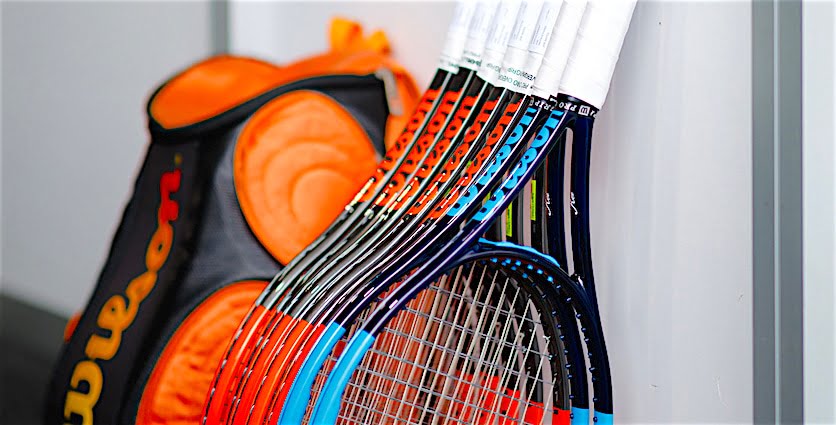
The Ultimate Beginners Guide to Buying a Tennis Racket
Buying a new tennis racket or in deed any new tennis gear, especially when you haven’t been playing tennis for long, can be a daunting experience and no-one wants to pay for something as personal as a tennis racket unless they know it’s the best option for them.
But who can you trust to help you on your tennis racket journey? At Tennishead, we feel responsible for helping you make the right decision which is why we’ve produced this complete guide to everything you need to now before you buy your next (or first) tennis racket.
We’ve covered every aspect you should to take into account because choosing the racket that’s right for you as it requires some serious thought. If we can help you to choose the best racket for you then we’ll be happy as we know you’ll be more confident on the court leading to a more enjoyable game of tennis
Lets get started!
What do you need from a racket?
This might seem like an obvious question to ask yourself but we can guarantee that not enough people really ask this before they buy a tennis racket.
It’s human nature to choose something because of reasons that might not produce the best result. For example, a beautifully designed and colourful racket might entice you to buy it and then your brain will block out the potential negatives of that racket because the stronger voice in your head is the voice that loves the look.
So here’s a complete list of all the questions you need to answer before you start to choose a racket. (In fact don’t even look at different rackets until you’ve asked yourself these simple questions)
Body size and strength
Certain rackets will be better suited for different sizes and strengths of tennis players. You might be a naturally strong person in which case you’ll need to use a racket that gives you more control and doesn’t add too much power to your game. On the other hand, you might feel you need help in producing more power.
In general you will find that the wider the frame of a racket then the more power it will give you. If you get a chance to look closely at the professionals on television you will see that the frames of their rackets aren’t actually very wide. This is because generally they are powerful players and capable of generating their own power rather than needing their racket to help them.
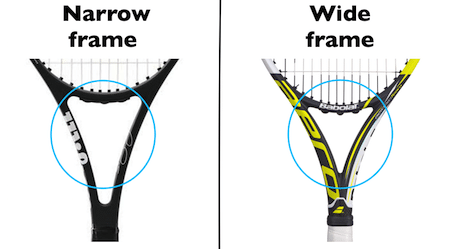
Examples of a narrow racket frame & wide racket frame
When we talk about the width of the frame we are generally talking about the part of the racket highlighted in this image. This part of the frame is called the ‘throat’ and is the part that will impart most effect on the ball when you hit it. So a wide frame at the throat, as shown on the right in the image, will generally give more power than the narrower framed throat as shown by the image on the left.
As well as your own strength you should also think about your height. In general a taller player will have longer arms and therefore their swing will be longer which will generate more speed and therefore power. You’ll find that if you are a shorter player then your swing will be shorter and therefore less powerful. Now this isn’t the case all the time as there are plenty of shorter players who can hit a very hard ball, we are just giving you some general advice and you must think carefully about your own body before making these decisions.
What type of swing do you have
Basically you will have a fast, slow or average speed swing. Any tennis coach or decent tennis player will be able to look at your swing and tell you if its fast or slow or average. A faster swing will often generate more power than a slower swing in which case the racket you buy should be less powerful as your fast swing will add the power for you. You would want more control from your racket so a narrower frame will probably be right for you.
What is your style of play
Are you aggressive or defensive? Most players are one or the other which will have an effect on the type of racket you should choose. If you are an aggressive player then you will probably want to try and hit the ball harder which means a more powerful racket might be right for you. If you are a defensive player than a lot of the time you will want to use the pace of the ball that your opponent has hit at you, in which case a narrower framed racket might be the one for you. Obviously you should take into your body shape and your swing speed here.
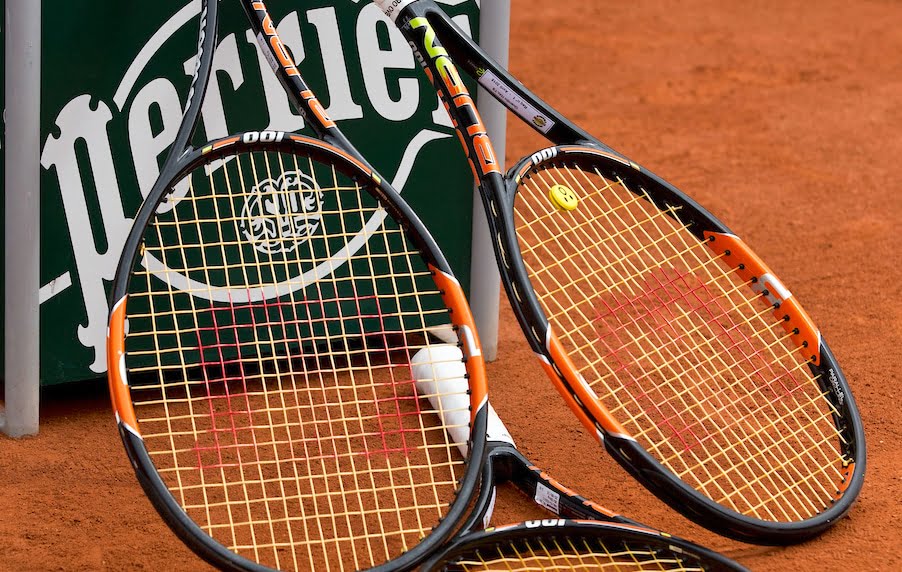
Technical aspects of a racket to help you narrow down the options
A tennis racket may look like a simple piece of kit but that’s far from true and the different technical aspects of a racket can make a huge impact on your play. It’s really important that you at least understand all the differences between a racket before choosing one. Here we’ve detailed the key technical differences you will find between the rackets plus a little advice on how each aspect can effect your game.
If you want to read a more detailed guide to tennis racket specifications then click here
Head size: This will typically between 95-110 square inches. Larger heads generate more power and have a larger sweet spot thus making it easier to hit the ball well. Smaller head sizes offer more control so if you are confident that you can hit the ball cleanly and you are already quite a powerful player then a smaller head size might help. Famously, Roger Federer moved from a smaller head to a larger head late in his career because he wanted more power from his backhand
Length: Adult rackets can be anything from 27-29 inches long, though most are nearer the lower end of the scale. Longer rackets are generally lighter than standard frames, and offer more reach and more power on serve (because you can hit the ball from higher up therefore being able to aim it down on a steeper angle). But beware because a longer racket will be harder to control so make sure you are certain you can handle it before buying a long framed racket.
Weight: The weight of your racket plays a major part in your swing and should therefore be a major deciding factor in the racket you buy. It’s true that most manufacturers will offer a range of weights of the same rackets, so don’t be afraid to ask or look for a racket you like but at a different weight as any good racket manufacturer should be able to offer this. Heavier rackets (320g and beyond) are generally are more powerful than lighter rackets (310g and below), but are less manoeuvrable and can wear a player out. (Strings add around 30g to the weight of a racket)
Balance: This is a tricky subject as it’s often down to personal choice so if possible we would recommend trying different rackets to work out if you prefer more weight in the head of the racket (the bit where the strings are) or more weight in the body of the racket (where the handle and throat are). Head-heavy rackets are often lighter, offering added power on groundstrokes, while head-light rackets are generally heavier but more manoeuvrable.
Stiffness: The racket flex on impact affects power and comfort. The stiffer a frame, the less energy is lost when hitting the ball, but sends more impact shock to your hand and arm.
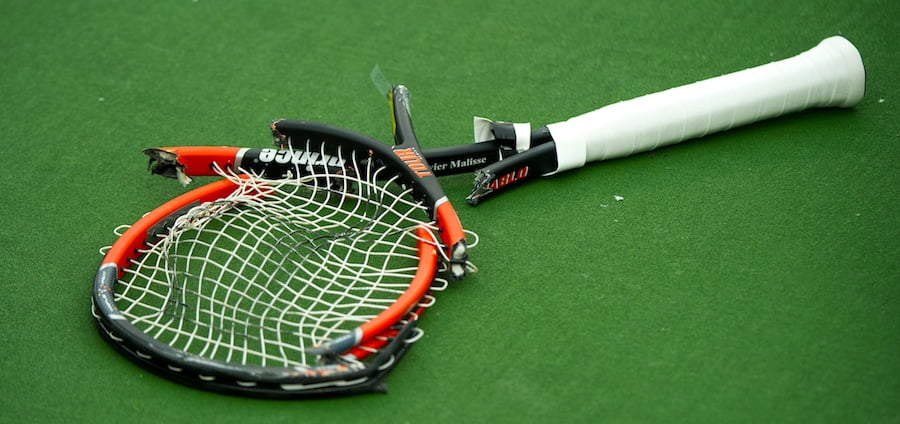
Other IMPORTANT factors to take into account
Grip size
Everyone has different size hand size so you need to check this before you buy the actual racket you want. Rackets are sold in a range of grip sizes and the only way to really work out what size you want comes from holding and playing with different grips sizes and then making a note of the one you like.
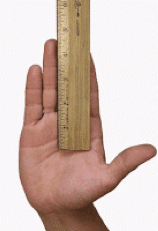
The best method for determining the grip size of a tennis racket is to measure the length between the tip of the ring finger (on your hitting hand) and the second line on your palm. This picture shows how to do this best. The measured length in ‘mm’ corresponds to the perimeter of the tennis racket handle. On each perimeter, the ideal grip size is then assigned. These can be found in the table below.
If you are in any doubt, choose a racket with a smaller grip size than you need and then you add your own grips later on for a small cost.
In fact, we would recommend always buying a racket with a slightly smaller grip size than you need and then buying what are called ‘overgrips’ to use on top of the actual grip. These overgrips are cheap and can be replaced regularly once they get worn out. This means you can regularly have a fresh grip for little cost and therefore your grip on the racket will be stronger.
It can be a little tricky to wrap the overgrip when you first start so maybe ask someone to show you, then the more often you do it the better you will get. We would recommend changing your grip after every 10-20 times you play depending on how sweaty you get or how worn our the grip looks.

Buying the frame only (without strings)
This is some of the most important advice we can give you before buying a racket. Be VERY careful if you buy a racket that already has the strings in it. Often these strings will be cheap and inferior quality and have been strung at the manufacturers factory with little care and attention (We’ve spoken to a well known tennis racket company and they have confirmed this is the case). We highly recommend you buy your racket without any strings (also known as ‘frame only’) and then find a professional stringer to add the strings. Ok this will cost you more but we feel the difference will be huge and make a massive impact on your game. There is nothing worse for us than seeing a player using an expensive new tennis racket with bad strings.
If you think more about this topic, the strings are the material that actually connects with the ball so to not think about them or spend time getting them right is a criminal mistake. Why do you think the professionals playing on television change their racket so often during a match? It’s because they believe their strings change even during a match and they want the strings to remain consistent hence why they change to a new racket with new strings.
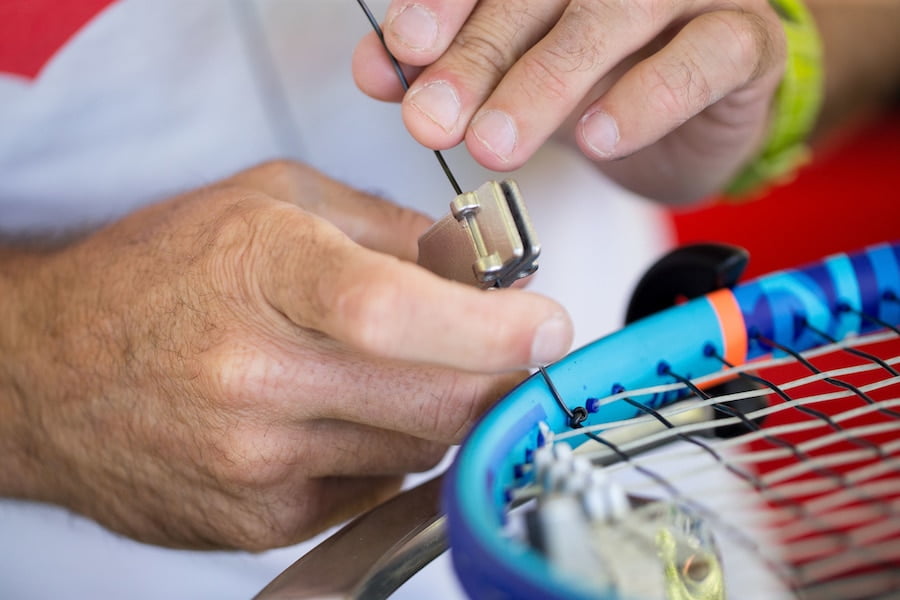
Buy two rackets at same time
Imagine if you are playing an important match and just at the crucial moment your strings snap (which they will in time). What will you do? Borrow a racket from a friend which will be completely different to your own? Stop the match and concede? This is why we suggest you always walk onto court with at least two rackets that are the same make of racket and have the same strings in the racket at the same tensions. This way if your strings do break you can just pick up your second racket and carry on playing.
Where to buy from – physical store or online
We are aware that not everyone has the choice of buying their racket from a physical store as tennis racket shops are quite rare so the chances that you have one near you are slim. But the beauty of visiting a physical store are:
- You can hold and feel different rackets
- You can ask the advice of the shop staff
- They might let you actually take some rackets away and test them yourself before buying
The best scenario is to buy from someone like AllThingsTennis.co.uk who are an online retailer with a physical shop as well. They will let you borrow demonstration rackets to try before you buy then you can purchase a new racket through their website, knowing you’ll be getting the lowest online price.
Checklist before you buy
- Think about your own playing style and body shape then match this to the racket
- Work out the specifications of the racket that will suit you best including head size, length, weight, balance and stiffness
- Find out your ideal grip size and then buy a racket with this size or 1 grip size smaller
- Think about buying the frame without strings and then have it strung by a professional once you’ve bought the frame
- Think about the option of buying two of exactly the same rackets at the same time (you might even get a better deal)
- Try and test out some rackets if you can and then look for the best place online to buy it as cheaply as possible
What else you should buy at the same time
- Strings – Click here for our expert buyers guide
- Racket bag – Click here to view a full range of great bags
- Shoes – Click here to find every shoe you’ll ever need
- Balls – Click here to buy the best balls in tennis
- Overgrips – Click here for a full range of over grips
- Keep up to date with the breaking news & tennis action at our tennis news section
- Win amazing prizes by entering our competitions
- Learn more about your favourite players including Roger Federer, Rafa Nadal and Novak Djokovic
- Check out the latest tennis equipment with our tennis gear reviews
- Receive regular updates with our legendary newsletter
- Read in depth features with stunning photography in tennishead magazine
- Can’t visit the tournaments you love? Check out our guide on how to watch tennis on TV
- Don’t miss a thing with our Live Scores service
- Follow tennishead on social media at Facebook, Twitter, Instagram & YouTube
- EXCLUSIVE 5% DISCOUNT for all tennishead readers on tennis rackets, balls, clothing, shoes & accessories with All Things Tennis, our dedicated tennis gear partner


